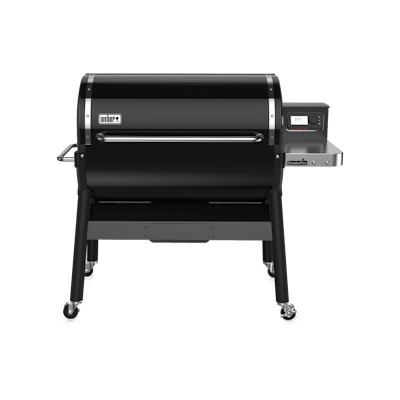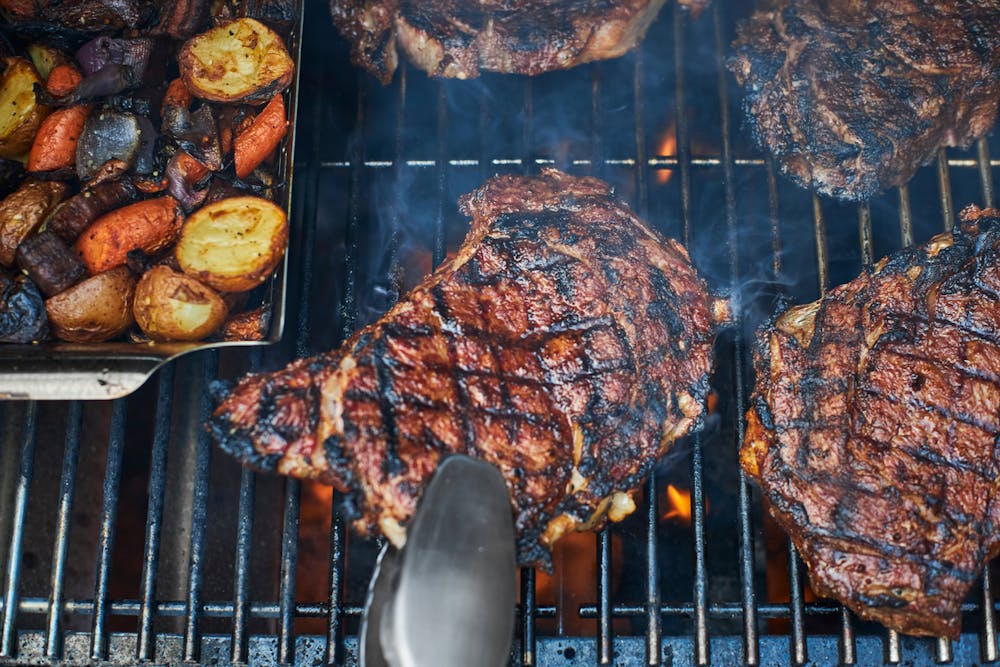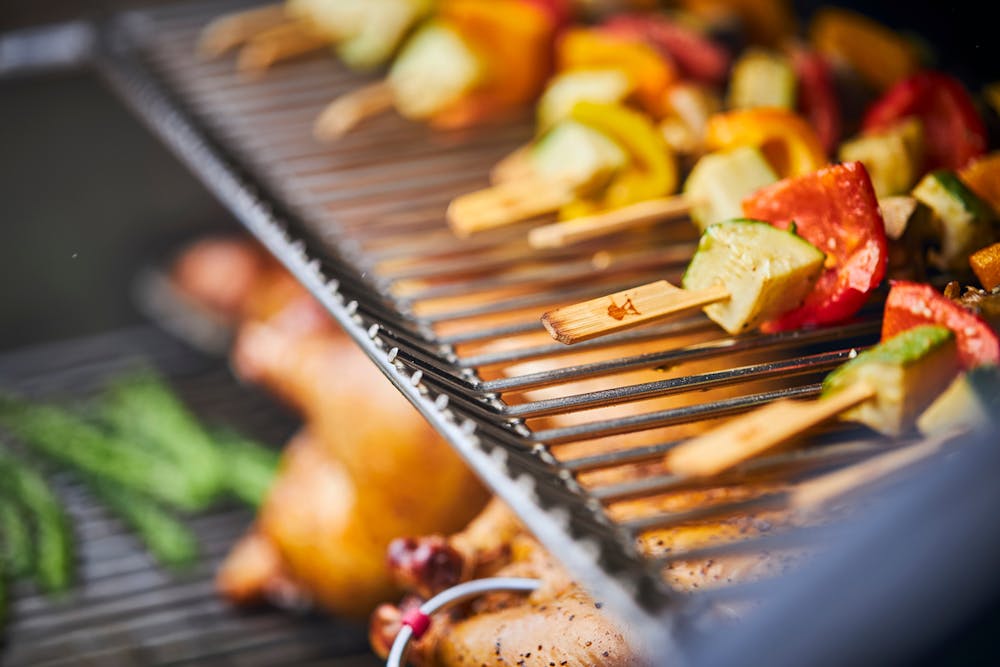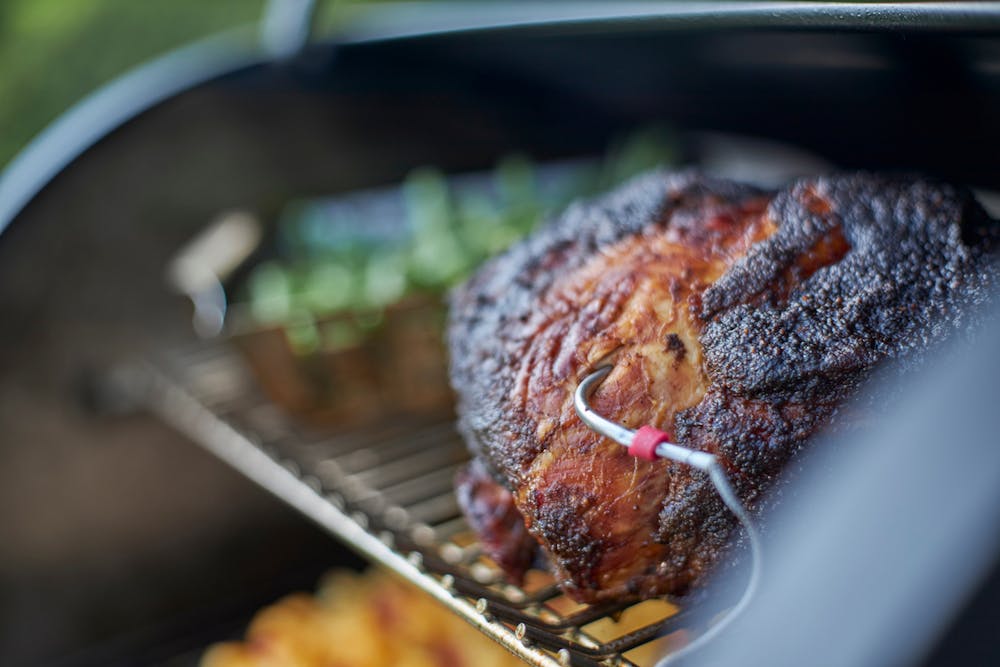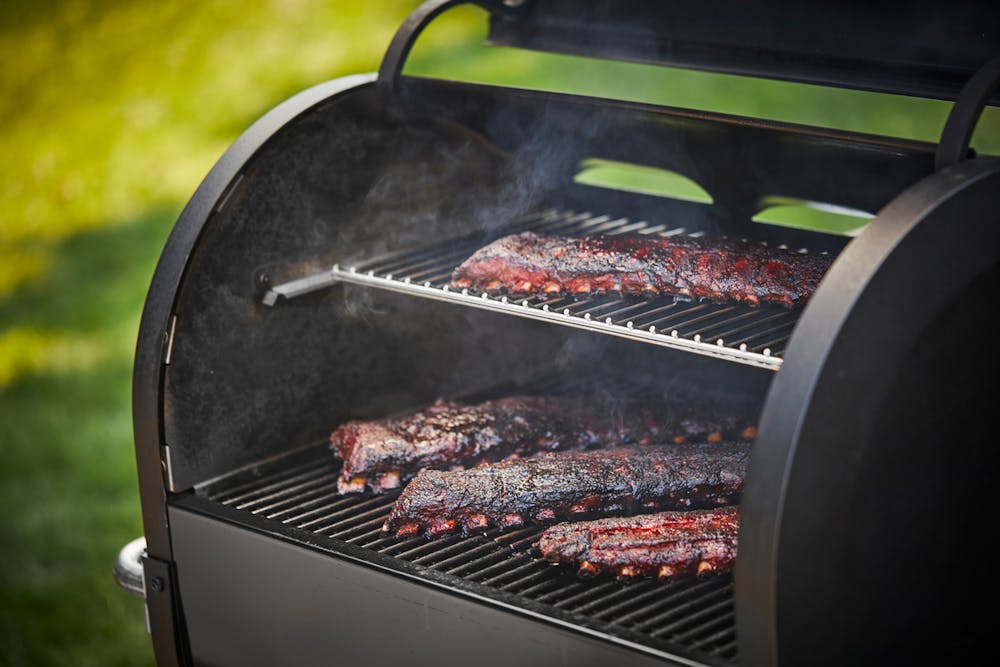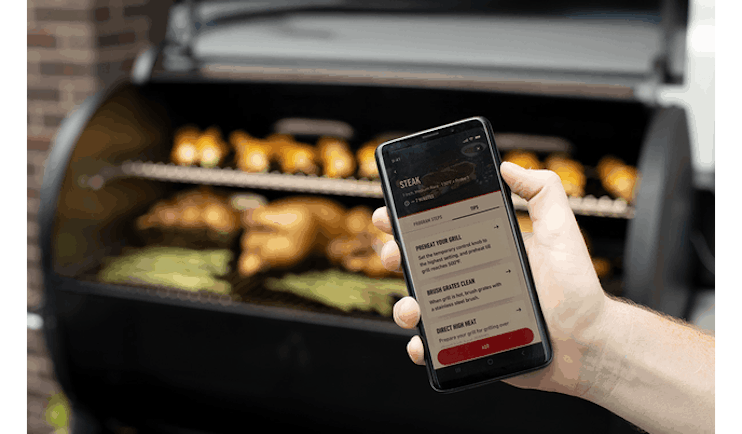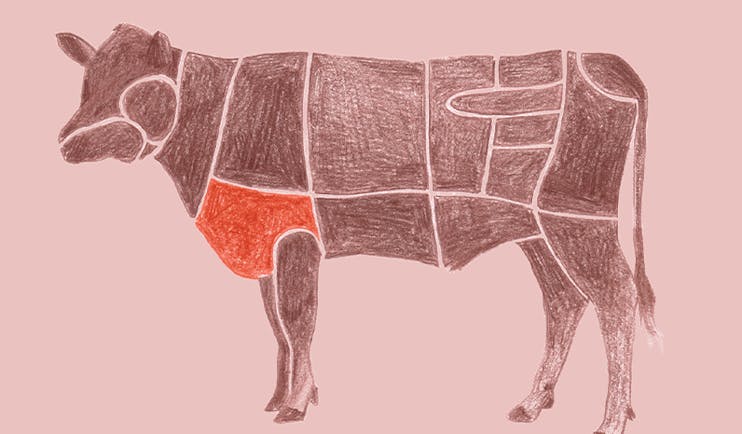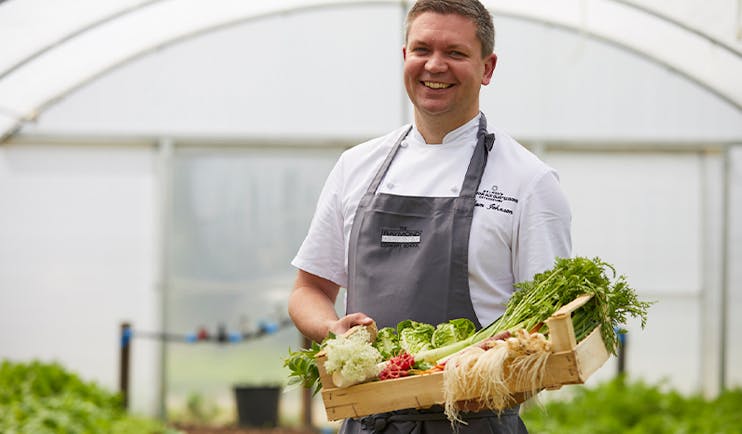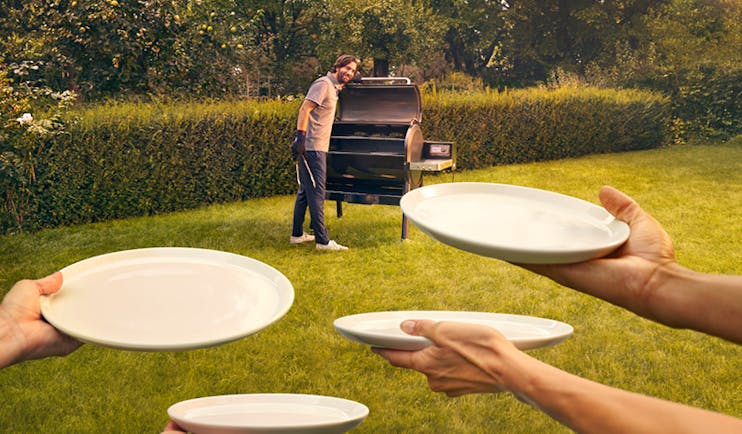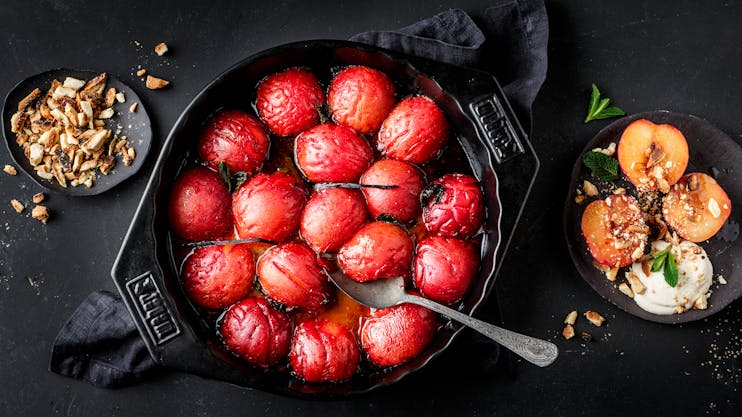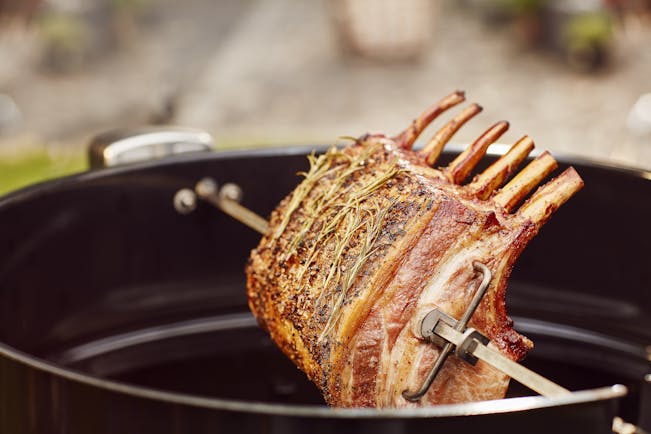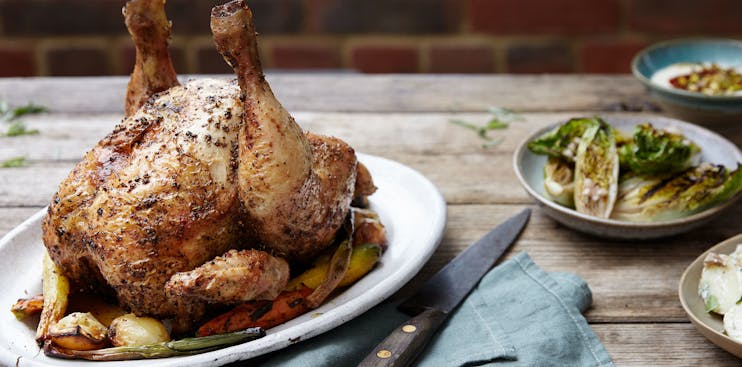1. In a small bowl mix the rub ingredients together. Set aside when finished.
2. Using a dull knife, slide the tip under the membrane covering the back of each rack of ribs. Lift and loosen the membrane until it breaks, then grab a corner of it with a paper towel and pull it off. Cut each rack crosswise in the middle to create two smaller racks. Sea- son the racks all over, putting more of the rub on the meaty sides than the bone sides. Leave the racks to stand at room temperature for about 30 minutes.
3. Set your barbecue up for cooking over low heat (120°C).
4. Place the ribs, bone-side down, on the cook- ing grate, close the lid and cook for 1 hour. Meanwhile, make the sauce and the mop.
5. In a small saucepan mix the barbecue sauce ingredients. Bring to the boil over medium heat on the stove, stirring often. Reduce the heat to medium-low and simmer for around 3 minutes to blend the flavours. Remove from the heat.
6. In another small saucepan mix the mop ingredients. Bring to the boil over medium heat on the stove, stirring often. Reduce the heat to medium-low and simmer for about 3 minutes to blend the flavours. Remove from the heat.
7. After the first hour, lightly baste the ribs with some of the mop. Close the lid and cook for another hour.
8. After the second hour, generously baste the ribs with some of the mop. Close the lid and cook for another hour.
9. After 3 hours of cooking, check if any of the racks are ready to come off the barbecue. They are done when the meat has shrunk back from most of the bones by about 1⁄2 an inch. When you lift a rack by picking up one end with tongs, bone side up, the rack should bend in the middle and the meat should tear easily. If the meat does not tear easily, continue to cook the racks. The total cooking time could be anywhere between 3 to 4 hours.
10. Lightly brush the cooked racks with some sauce. Transfer to a tray and tightly cover with aluminium foil.
11. Let the ribs rest for 10 to 15 minutes before serving.
12. Cut the racks between the bones into individual ribs and serve warm with the remaining sauce on the side.
All of our recipes are created by our expert chefs at the Weber Grill Academy. View more inspirational recipes or book a course at the Grill Academy now.


